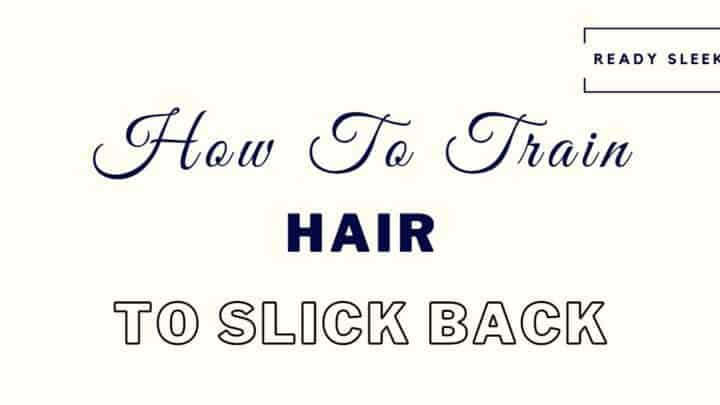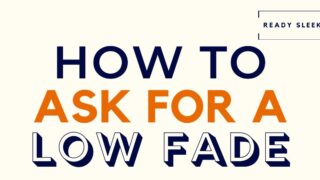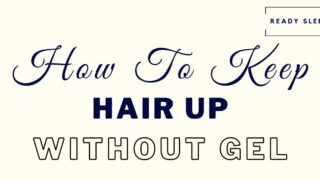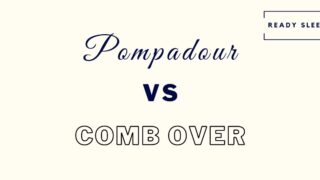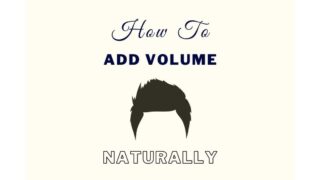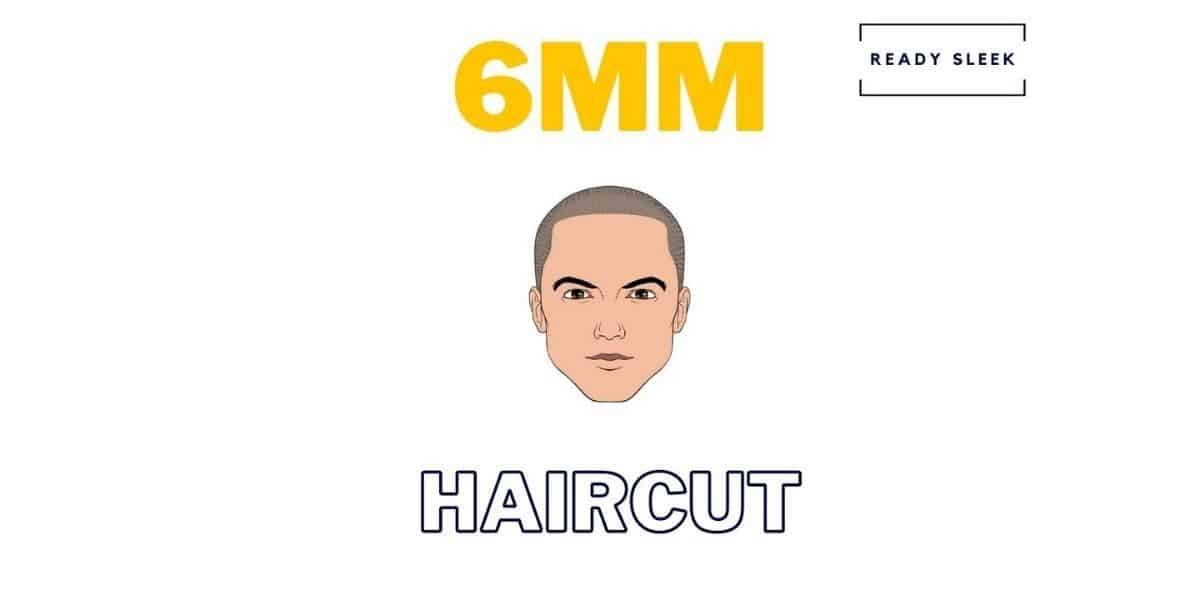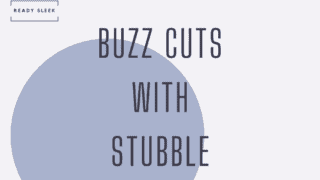It’s no secret that styling a glorious slick back is easier for some than others. While a fortunate minority may find it pretty simple to sweep back their locks, many find it tough. But can you train hair to slick back?
Hair can be trained to slick back using measures such as brushing or combing damp hair back daily, targeted blow-drying, and accessories such as hairbands, hairnets, and spandex caps.
Although that’s the gist, as always, I wanted to dig deeper and give you detailed and actionable tips on how to achieve it for yourself.
It’s important to know that you don’t need to rely on having to apply tonnes of styling products. Sure, some of them will help.
But the real magic happens before you apply the product. It’s the effort you put in to make the effects of styling products even more impressive when slicking back your hair.
After going through 8 solid tips you can try out, I’ll go through some hair types and specific tips on slick back training for each of them.
Let’s get to it.
8 Ways To Train Your Hair To Slick Back
The thing about “training” is that it takes time. None of these are instant or overnight fixes. You’ll need to stick with them to get the results you want.
After a while, you’ll notice that your hair just seems to flow backward smoother and with less resistance.
You’ll probably also notice that it stays that way for longer periods of time and with less styling product necessary.
1. Grow It Longer
Ensure your hair is at least 4 to 6 inches before even attempting to train your hair to slick back.
Although this may seem obvious to some, it’s frequently ignored by many. Length is crucial when it comes to slicking hair back.
Without enough length, no matter how much effort you put in and how much product you use, it just won’t be enough.
You may get it to slick back for a short while, but it’ll soon flop forward in an inevitable mess.
The thing to note about this length is that it’s surprisingly long. Probably longer than you might think at first.
Guys who have their hair slicked back may not look like they have hair as long as this when – well, it’s slicked back. But when you see it un-slicked it’s clear as day.
If you aren’t a fan of whipping a ruler out to measure your hair, just try to make sure it reaches at least the bridge of your nose when the fringe is pulled straight down.
2. Work It While Damp
You’ve got to be careful here, as damp hair is prone to breakage.
However, when first slicking your hair back it’s a good idea to have it post-shower and towel-drying.
When the hair has some moisture to it it’s a lot easier to work it the way you want it. It’s more responsive and you’ll have less resistance.
It’s also more likely to stay in place when damp, although this will be temporary as it will obviously dry soon enough.
Avoid trying to slick back soaking wet hair, however, as this hair is especially delicate.
You can do this with a brush or a comb.
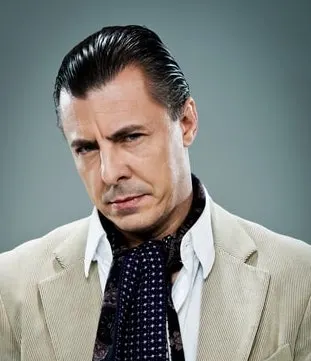
3. Blow Dry It Into Place
Blow-drying is a great way to “force” the hair to lay the way you want it to using pressure and heat.
Hold the blow-dryer around 6 inches away from the hair but target the bases of the strands as this is how you’ll get the best hold. Use a low to medium heat setting.
Using a heat protectant spray is a good habit to get into.
As you’d expect, you’ll want to blow-dry backward as this is our desired end direction. But you can use the blow-dryer in different ways to determine how much volume you want.
You can point it more upward and tousle the hair as you blow-dry backward to produce more volume.
Or, you could point the nozzle at a slight downward angle while blow-drying backward to reduce the volume and have the hair laying flatter and closer to the scalp.
Either way, blow-drying while combing backward with your fingers, a comb, or brush will strengthen the hold and make the training tips further down this list even more effective.
4. Brush Or Comb It Back Daily
Don’t overdo it. In general, over-combing and over-brushing will do more harm than good. But once a day is the minimum you’ll want to do it when trying to get your hair to slick back.
The beauty of it is that as your hair gets more used to slicking back and staying back, the less often you’ll have to brush or comb.
In addition, the less time it’ll take to slick back with each attempt.
But which should you go for when slicking back your hair – a brush or a comb?
Slick backs are very simple styles that usually don’t require much contouring or precision at all.
Because of this, a brush is perfectly fine. It’ll quickly sweep the hair back without much fuss or trouble. Personally, I like vent brushes.
But combs are good if you want a sharper, more precise, or more shapely slick back. For example, if you wanted a little contour at the front or a well-defined side part.
A comb can achieve this for you while a brush wouldn’t be able to.
Combs are also great at detangling hair and detangled hair is a lot easier to slick back. They’re also a lot more portable than brushes – great for on-the-go slick back styling.
A good option would be to use both. The bulk of the work would be done by the brush first. But you can go over it with a comb afterward if you want to neaten the edges, define the side part, or add some contouring at the front.
The two often work well when used together.
5. Hairbands And Headbands
Accessories such as these are great for training the hair to stay back. They’re especially good when you use them after you’ve combed, brushed, and blow-dried backward after a shower.
It’s a physical way of preventing hair from flopping forward.
Don’t get me wrong – you won’t be wearing this all day, every day. After all, the whole aim is to slick back without the need for this stuff.
But wearing hairbands or headbands, even while just lounging around the house, is a good way of training the hair.
The downside with using these two accessories for this purpose is that they really only apply pressure to the hair at the front.
They don’t do much for the hair at the back.
Although this is probably more comfortable and less restrictive, they won’t be as effective at slick back training all of the hair as the accessories in the next tip would be.
6. Spandex Caps, Durags, And Hairnets
I put all of these in the same tip because they’re essentially doing the same thing.
They all apply downward pressure on the hair across the entire top of the scalp. That’s what sets them apart from hairbands and hairnets.
Because of this, they’re often more effective when getting your hair to stay back for longer periods of time.
Once again, they’re most effective after you’ve brushed/combed and blow-dried backward. You just pop them on to keep it all in place.
Don’t keep them too tight – a snug fit is all you want. Try and make sure you don’t have stray hairs peeking or poking out once you put them on.
You probably won’t be comfortable leaving the house with spandex caps and hairnets on. But that’s ok.
Just keep them on while you’re at home for short bouts of time. 15 to 30 minutes is fine. You don’t want excessive pressure on your hair for long periods of time in any case.
After a while, you’ll probably find that slicking your hair back just feels more natural and effortless as the hair strands feel more comfortable laying that way.
An option for those men who want to train their hair on the go is up next.
7. Baseball Caps
I’ve kept baseball caps separate because they’re just a great way of keeping your hair back without drawing as much attention as a hairnet no doubt would.
Use them the same way you would use any of the other accessories on this list.
It’s got the benefit of training the hair while being used as a genuine style accessory at the same time. Similar to a durag but more commonly worn.
8. Styling Product
You’ll definitely get familiar with styling products if you’re looking to regularly style traditional slick-backs.
They’re a quick and easy way to keep the slick back in place even when it may not seem possible at first.
The hold they provide will form part of the training.
In addition, with slick backs, you’ll usually want some gloss and to get gloss you’ll need to use shiny products.
But not always.
In fact, men with fine or thin hair looking to slick their hair back may find that shiny products like gels, water-based and oil-based pomades make their hair look even thinner.
It may also look flatter than they would like due to the weight – products such as these tend to reduce volume and add definition.
If you’d rather use a more matte product, go for something with a medium-to-heavy hold like clay.
It’ll allow you to produce some volume and texture while still keeping the hair swept backward. It won’t look as “slick” or defined as a slick-back styled with a gel or pomade, but this is exactly what some men may want from their slick back.
Less slickness, less gloss, and more texture and volume.
Hair Types And Slick Back Training
The tips in the list above will do the trick for the vast majority of men. However, there are tips that are more specific to certain hair types.
Here are a few to think about.
How To Train Thick Hair To Slick Back
To train thick hair to slick back, backward pressure from a blow-dryer will come in useful, as well as tighter-fitting caps and hairnets. Heavier products such as pomades are often necessary to keep things in place.
Getting thick hair to slick back and stay in place against the grain can be tough. You’ll have more resistance than you would with fine hair and it’ll fight hard to come back forward.
Boar bristle hair brushes often come in handy for coarse and thick hair as they guide the hair in the desired direction while usually being anti-static and minimizing flyaways at the same time.
Although thick hair will often benefit from more snug-fitting spandex caps, durags, or hairnets when slick back training, don’t make it excessive.
It should still feel relatively comfortable and don’t leave it on for more than 30 minutes at a time. Excessive traction on the roots for extended periods of time isn’t good.
How To Train Curly Hair To Slick Back
The key to training curly hair to slick back is in the type of brush used. For a smoothing effect use a boar bristle brush with densely packed bristles for a tighter and smoother slick back. Use it on moist or damp hair to reduce frizzing.
If, on the other hand, you’re looking to define the curls and detangle the hair as opposed to smoothing it out, a brush with wider-spaced bristles would be better.
Curly hair can produce a great slicked back look but you shouldn’t expect it to look the same as the ultra-smooth and defined look you get with straight hair.
The curled or wavy texture will still be present when slicked back no matter what, but it often looks great in its own way.
How To Train Straight Hair To Slick Back
To train straight hair to slick back, simple measures such as daily brushing, gentle backward pressure from a blow-dryer, and accessories such as spandex caps are often effective.
It’s the hair type that is most likely to give you that classic, tight, vintage, defined slick back famous from those 1950s movies.
Of course, the thicker the straight hair is, the tougher it’ll be to slick back. But overall, it’s easier to tame than curly or wavy hair in this respect.
It’s also usually more likely to stay in place once styled.
Conclusion
There you have it. Hopefully, a collection of tips you can try out yourself to eventually achieve your ideal slick back.
It’s a style that may not be as popular as it used to be, but its simplicity does keep bringing men back to it time and time again.
It isn’t going anywhere, anytime soon.
Enjoy.
Ready Sleek founder. Obsessed with casual style and the minimalist approach to building a highly functional wardrobe. Also a fan of classic, vintage hairstyles.

